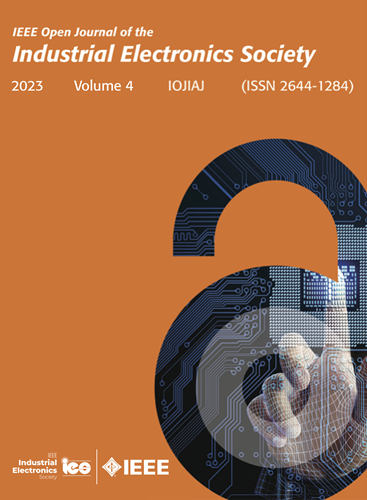能量自治微系统的双存储电源管理
IF 7.2
1区 工程技术
Q1 AUTOMATION & CONTROL SYSTEMS
引用次数: 0
摘要
实现能源自主微系统的一个主要挑战是冷启动,特别是在通常不确定且涉及长时间不活动的实际用例环境中。本文提出了一种双超级电容存储电源管理架构,主电容提供快速启动,副电容提供大能量缓冲。该电路引入了MOSFET开关和降压转换器的组合,可以处理有效的电荷传输并消除两个存储电容器之间的泄漏,从而更快地冷启动。实验证明,对于1.5 mF/470 mF超级电容器组合,启动时间比传统解决方案减少了两个数量级以上,而不会影响整体效率。实验分析了该系统的各种功能模式,使用感应电力线能量采集器,其电流对应于工业定义的飞机传感器用例。例如,分别从10a和15a均方根,500hz电力线测量11mw和32mw的调节输出。该架构具有可配置性,并可由供电系统的微控制器根据功能优先级进行动态参数化和控制,以优化电源路由。本文章由计算机程序翻译,如有差异,请以英文原文为准。
Dual Storage Power Management for Energy Autonomous Microsystems
A major challenge towards enabling energy autonomous microsystems is cold-starting, especially in real use case environments which are often uncertain and involve long inactivity periods. In this article, a dual supercapacitor storage power management architecture is proposed, with the primary storage capacitor providing fast start-up and the secondary providing a large energy buffer. The circuit introduces a combination of a MOSFET switch and a buck converter that can handle efficient charge transport and eliminate leakage between the two storage capacitors, leading to faster cold starting. A start-up time reduction of more than two orders of magnitude over conventional solutions is experimentally demonstrated, for a 1.5 mF/470 mF supercapacitor combination, without a compromise in overall efficiency. The various functional modes of the system are experimentally analyzed, using an inductive power line energy harvester with currents that correspond to an industrially defined aircraft sensor use case. For example, 11 mW and 32 mW regulated output was measured from a 10 A and 15 A rms, 500 Hz power line, respectively. The architecture is configurable and can be dynamically parametrized and controlled to optimize power routing according to functional priorities by the microcontroller of the powered system.
求助全文
通过发布文献求助,成功后即可免费获取论文全文。
去求助
来源期刊

IEEE Transactions on Industrial Electronics
工程技术-工程:电子与电气
CiteScore
16.80
自引率
9.10%
发文量
1396
审稿时长
6.3 months
期刊介绍:
Journal Name: IEEE Transactions on Industrial Electronics
Publication Frequency: Monthly
Scope:
The scope of IEEE Transactions on Industrial Electronics encompasses the following areas:
Applications of electronics, controls, and communications in industrial and manufacturing systems and processes.
Power electronics and drive control techniques.
System control and signal processing.
Fault detection and diagnosis.
Power systems.
Instrumentation, measurement, and testing.
Modeling and simulation.
Motion control.
Robotics.
Sensors and actuators.
Implementation of neural networks, fuzzy logic, and artificial intelligence in industrial systems.
Factory automation.
Communication and computer networks.
 求助内容:
求助内容: 应助结果提醒方式:
应助结果提醒方式:


